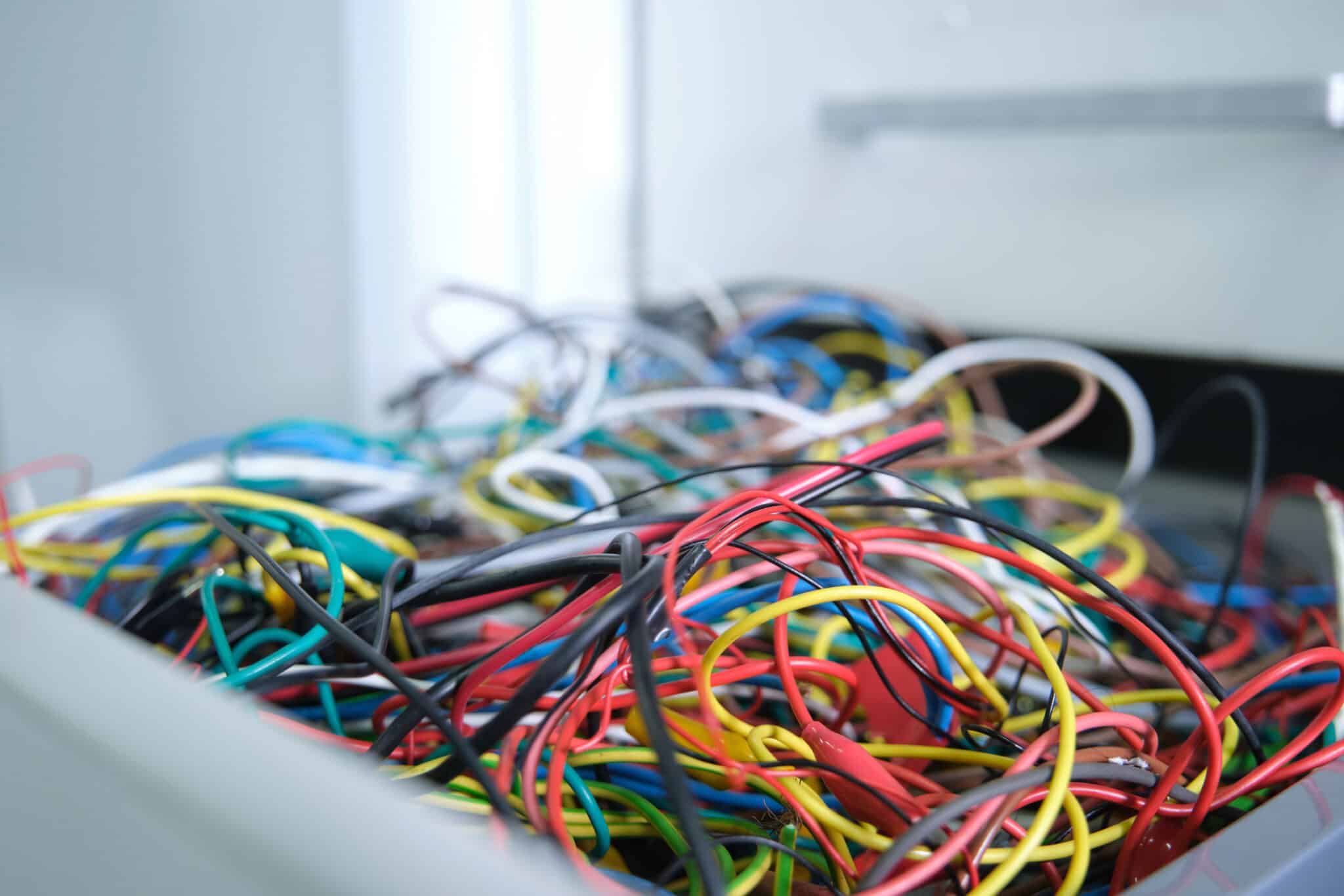Dental IT Cabling Disasters: 5 Costly Mistakes to Learn From
IT cabling probably isn’t the first thing on your mind when running a dental practice—until something goes wrong. Poorly installed dental IT cabling can cause unexpected downtime, hidden expenses, and long-term frustration. Below are five common mistakes, with example scenarios that show how things can go off the rails—and how to avoid those problems.
1. The Patchwork Job: Mixing Old and New Cabling
Example Scenario:
A dental clinic upgrades its operatories with new digital X-ray machines but keeps its outdated Cat5 cabling. Soon, the network starts lagging, software freezes, and uploads crawl. In the worst cases, practices in this situation end up needing a full cabling overhaul—doubling costs and extending downtime.
How to Avoid It:
When upgrading dental technology, your cabling must match the demands of new equipment. Today, Cat6 or higher is typically recommended. Mixing old and new infrastructure might save money upfront but often leads to bigger expenses later. Plan your cabling to handle not just current needs but future upgrades as well.
2. Poor Labeling and Documentation
Example Scenario:
A practice relocates its server room only to find a mess of unlabeled cables. Tracing connections becomes a guessing game, dragging out the move and inflating labor costs. In extreme cases, disconnecting the wrong line can bring down critical systems.
How to Avoid It:
Label both ends of every cable and maintain a detailed network map. Documentation may seem tedious, but it’s essential for smooth dental IT maintenance. When something goes wrong—or you need to move or expand—good records will save hours of troubleshooting.
3. Skipping Conduit and Protection
Example Scenario:
New dental computer cabling is installed without conduit to cut costs. Later, a minor water leak or a rodent infestation damages exposed cables, knocking out internet access and key equipment mid-day. The result? Emergency repairs, lost revenue, and unnecessary stress.
How to Avoid It:
Always install cabling in protective conduit, especially in areas exposed to moisture, pests, or heavy foot traffic. Dental offices have unique risks, and a little extra protection up front prevents bigger failures down the line.
4. Overcrowded Runs and Signal Interference
Example Scenario:
To save space, a practice runs power lines and Ethernet cables through the same pathway. Soon, they experience sluggish networks and dropped VoIP calls due to electromagnetic interference (EMI), a common issue when data and electrical cables are too close.
How to Avoid It:
Dental computer cabling should be routed separately from power lines to prevent EMI. When space is tight, consult dental IT professionals familiar with both dental setups and best practices for network stability. Cutting corners here often leads to unreliable performance.
5. Using Unqualified Installers
Example Scenario:
To keep costs down, a practice owner hires a general contractor or handyman to handle their network cabling. While the install looks fine on the surface, hidden problems like loose terminations and poor-quality connections cause repeated slowdowns and failures. Eventually, the entire system may need redoing by a professional.
How to Avoid It:
Dental IT cabling requires specific expertise. Hire professionals who understand dental workflows, digital imaging requirements, and healthcare data security. While hiring a cheaper installer might save money at first, it usually leads to higher costs in repairs and downtime.
Key Takeaways
It’s tempting to save money on dental IT cabling, but cutting corners often leads to bigger expenses later. To safeguard your practice:
- Use modern, high-quality cabling (Cat6 or above).
- Label and document everything thoroughly.
- Protect cables with conduit, especially in risky areas.
- Keep data and power cables separate to avoid interference.
- Always hire specialists with experience in dental IT.
Strong infrastructure keeps your practice running smoothly and helps avoid surprise costs and disruptions. Don’t let small oversights turn into big problems.
Partner with Priority Networks
Don’t leave your dental practice’s IT infrastructure to chance. Priority Networks specializes in dental IT cabling and maintenance, ensuring your systems are reliable, fast, and future-ready. Whether you’re upgrading, expanding, or troubleshooting, our expert team delivers precision and peace of mind.
Contact Priority Networks today for a consultation and get your cabling done right the first time.




